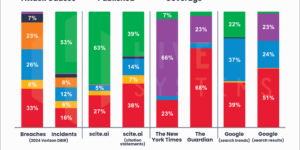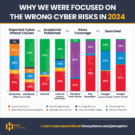The traditional job as we know it is slowly being replaced by skills-based work models. Could the shift help you recapture productivity?
When it rains, it pours. The labor market was already strained in some industries prior to 2020. Add a pandemic, increasing inflation, and the Great Resignation phenomenon and that strain has become a downright crisis. In January 2023, the Bureau of Labor Statistics reported more job openings than unemployed people, continuing a trend that started in May 2021. BLS also reported over 10.8 million openings at the start of 2023.
With so many organizations competing for so few workers, how is the insurance industry going to attract and retain talent? With over 374,000 openings in the finance and insurance industry, more than half of the insurance workforce looking to retire by 2028, and just 4 percent of millennials showing interest in working in the insurance industry, the crisis for the insurance sector isn’t coming — it’s already here.
As organizations across all industries have raced to adapt to a new labor market, new work models have emerged. From flexible work to new ways to measure employee and enterprise success, companies are learning to adapt to these changes in ways that were not talked about let alone considered prior to 2020.
With good reason, too. As the search for degreed, skilled workers hits a wall, organizations have to think beyond their traditional methods of both finding and retaining employees. Such has been the focus since rapid technology changes ushered in the fourth industrial revolution era, which has thrust the world into a significant shift in how business is conducted and, most importantly, how today’s workplace functions.
Fortunately, there are changes your organization can make to attract job seekers with the right set of skills and better utilize the skills of your current employees. A skills-based work model taps into the variety of skills your employees have and empowers your team to become a more responsive, flexible workforce.
What Is a Skills-Based Work Model?
Imagine hiring skills, not titles. Imagine jobs going away and right-fit talent taking its place. That’s the premise behind skills-based work. Job candidates are evaluated and hired based on their skillsets, not their work history. For example, a worker who has put in eight years as an insurance supply chain manager typically has developed productivity and efficiency skills. Those skills could well help a company identify, track and manage their operations to help teams reach outcomes faster and more effectively.
What a skills-based approach does is open up the workforce to more cross-departmental collaboration and work sharing. By doing away with job titles and descriptions, organizations can recognize the talents within their current staff and fill in any skills gaps with new hires.
Another example: At our company, we regularly re-engage retiring and retired insurance professionals in transitional, work-from-home post-careers. Today’s underwriting executive could well be tomorrow’s claims adjuster or cybersecurity expert. Depending on the experience accumulated over a long career, each professional would be able to use those secondary skills in a way that enhances the client company’s core business needs.
Sharing the Wealth
Through this level of sharing resources and knowledge, organizations can widen their talent search to include candidates whose skills are likely to fill gaps within the current workforce. That can speed up the hiring process and make it easier to find employees who have the right mix of behavioral skills and on-the-job experience.
That matters. A recent survey by Deloitte reveals that 30 percent of respondents feel their organizations are ineffective at matching the right talent to work. When workers are not aligned with the work, both the organization and the worker are hampered. Removing those traditional barriers to hiring and, more importantly, to working creates a more reasonable approach to productivity and collaboration.
Yet many organizations still resist the change. A 2023 Deloitte Global Human Capital Trends survey shows that 93 percent of respondents believe moving away from the jobs-focused approach is important to their organization’s success. However, just 20 percent think their organizations are ready for it. The biggest thing holding them back? Legacy mindsets and practices, say 46 percent of that same survey’s respondents.
The Approach
For those willing to make the shift, finding talent and re-engaging existing employees takes a new approach.
Rethink your workforce. The first step is to rethink your current employee population. Determine what skills are available, which ones are being underutilized, and where you may have gaps in knowledge or experience.
Update your job descriptions. Less important is a candidate’s degree; more important is the candidate’s skillset. Understand what skills each job needs and which of those can be learned on the job. While education is part of most job listings, education should play a minor role compared to the skills your organization needs. For example, an administrative assistant who has handled numerous claims could be a bigger asset to your organization than a candidate with a BS in mathematics. Reframe your job postings to seek out the skills rather than the education or the years of experience. Encourage those without educational credits to apply.
Look beyond job listings. Consider ways in which you can re-engage industry talent or with outside organizations that can help steer candidates with the appropriate skills your way. Create partnerships with community groups and associations to expand beyond the reach of your job ad.
Make the most of behavioral questions. How has the candidate used the skills you’re seeking? Look for ways in which the candidate has applied their skills with successful results. Music streaming service Spotify was one of the first companies to adopt a skills-based model. They tend to ask a number of behavioral/situational questions that are intended to uncover skills and potential reactions of each candidate.
Conduct blind interviews. Blind interview processes help to remove any unconscious bias that could be present in your hiring process. Screen candidates whose names and identifiers don’t appear on their resumes or profiles. And pre-testing of your candidates should also be anonymized. You can pre-qualify candidates’ personalities anonymously, which can actually increase the diversity within your organization. That matters — diverse workforces are more productive.
Reskill your current workforce. Particularly in the more technology-driven facets of your operations, employees will need to change or enhance their skillset. Encouraging all employees to reskill in any area that interests them is a great way to build agility in your workforce. Losing a key employee does not need to bring the work to a halt when other employees are skilled and ready to fill the gap.
Letting Skills Lead
In today’s competitive labor market, finding employees that possess problem-solving skills and the ability to collaborate and adapt to changing business demands is tougher than ever. For the insurance industry, the problem is exacerbated by a young workforce that has not yet considered insurance as a viable career option.
As a result, clinging to traditional, how-we’ve-always-done-it hiring and job performance metrics simply won’t work. Insurance organizations need to attract and retain talent. To do so, they should be considering new approaches to refocusing both the way they hire and the way they utilize the talent in their organizations.
Adopting a skills-based approach to hiring and engaging workers, your organization can benefit in many ways. Employees are happier, the candidate pool is widened, and skills that may otherwise lie dormant within your company are able to improve overall outcomes. Your organization becomes more flexible and more responsive in an ever-changing, competitive market.
*This article was originally published by Insurance Journal, our sister publication.




















 Wildfire Smoke’s Health Risks Linger Long After Homes Escape Burning
Wildfire Smoke’s Health Risks Linger Long After Homes Escape Burning  Slideshow: Carrier Management’s 2024 Top Editor’s Picks (Unlocked)
Slideshow: Carrier Management’s 2024 Top Editor’s Picks (Unlocked)  Four P/C Insurers Are ‘AI Titans’; AI Impact Leaders Revealed: Research
Four P/C Insurers Are ‘AI Titans’; AI Impact Leaders Revealed: Research  Study: Widening Gap Between Cyber Attack Causes, Public Perception
Study: Widening Gap Between Cyber Attack Causes, Public Perception 



